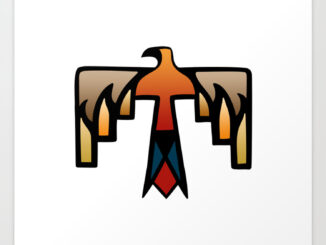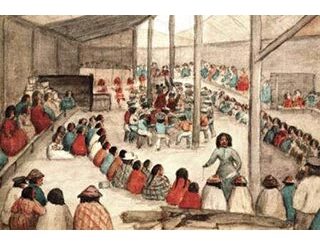
In our modern world, we are always moving from one place to another. We use road signs, maps and even GPS devices to help us reach our destinations. Many times, older travelers don’t use such sophisticated ways to get directions. Old schoolers, like myself, still use maps made of paper or ask someone for directions.
But, how do you navigate from A to B in the forest? It’s so easy to get lost, especially since far fewer sophisticated technologies are available to navigate through them. Even a basic compass can be difficult to use. Unless you walk on well-worn, designated park trails that can easily guide you back to and from where you started, you would need to have an exceptionally good memory for recalling distances and directions. But, if you were blindfolded and dropped into a dense forest, it might be impossible to get back to civilization.
Centuries ago, Native Americans created a basic system using trees for navigating forests. Have you ever taken a long walk through the woods in the United States and seen old trees that are oddly bent? Native Americans bent saplings toward the directions to help other Native American tribes find important landmarks. These “Indian trail signs” also known as “Indian trail markers” pointed other natives to “rest stops.” However, traveling natives probably didn’t know specifically what these bent trees pointed to, except they signified important places such as to acquire water, food, rocks for tool making, as well as locating burial grounds and areas where other native tribes lived.
Early natives took young trees made of oak, maple, and elm, and bent them over until the tops were pulled close to the ground. Over time, as these trees grew much larger they morphed into oddly, crooked shapes. Instead of growing straight up, from five feet up, they bent sharply into right angles, parallel to the earth. Then they turned sharply upward. This shape of such a tree appears to zig-zag. The bent area between the angle and the straight part that grew upward, “pointed” to important destinations.
For the past one hundred years, networks of special trees have been found in forests, parks and private property throughout the country. As of 2013, over 2,000 trees had been located in 40 states. Plus the search for more continues. However, they are being cut down as more forests are cleared for modern development, but historians and nature conservationists are fighting to preserve these trees as historical natural landmarks. With continued exploring, there is little doubt that many more trail trees can be found.
Unless otherwise stated, PONIREVO and/or its licensors DO NOT own any intellectual property rights in the website and material on the website. Majority of the site’s content has been scraped and auto posted by a third party artificial intelligence program —– PONIREVO Creation Team.
Proudly WWW.PONIREVO.COM



